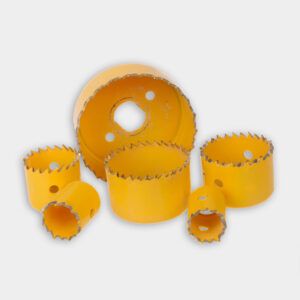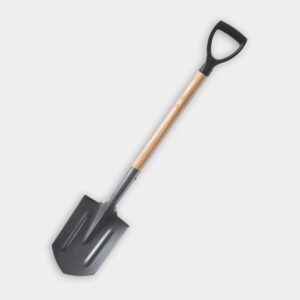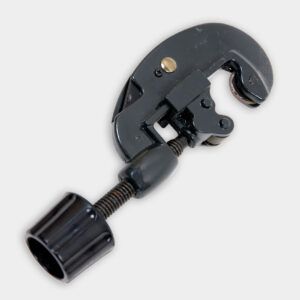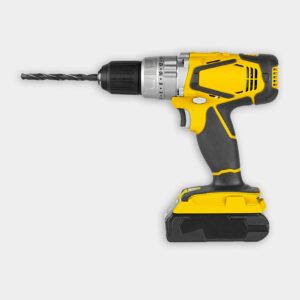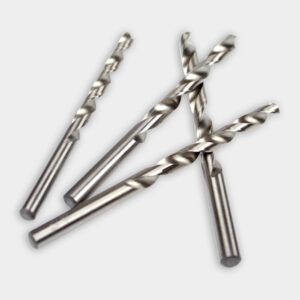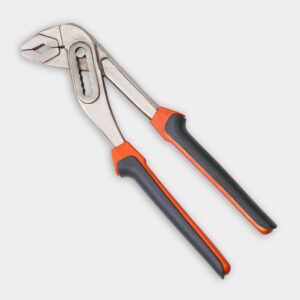We may be compensated if you purchase through links on our website. Our team is committed to delivering honest, objective, and independent reviews on home products and services.
Adding a utility sink to your barn setup is a game changer. It can make your barn chores much easier when you have access to running water to wash your hands, clean tools, and more. This is a straightforward project for those who have basic do-it-yourself (DIY) skills and about four hours to complete the job. In our video, Ask This Old House’s plumbing and heating expert, Richard Trethewey, demonstrates how to install a utility sink in a barn. We’ve also included step-by-step instructions in our guide below.
Planning Your Utility Sink Installation
Before diving into the installation process, you need to take a few steps to plan the project. This includes choosing the right location for your sink, gathering necessary materials, and understanding the basic plumbing requirements.
Choosing the Right Location
First, you’ll need to figure out where to put your utility sink. Consider the following factors when picking out a location:
- Available wall space
- Drainage options
- Ease of access for users
- Protection from freezing temperatures
- Proximity to existing water lines
If you have room for it, place the sink on the wall closest to the water source so that the pipe doesn’t need to be very long. This will help to reduce the cost of this project and make it easier to install.
Gathering Materials and Tools
After you’ve determined where to put your sink, it’s time to gather your tools and materials. Having everything ready to go before you start will make the installation process faster. To install a utility sink in your barn, you’ll need the following materials:
- Concrete anchors
- Crushed stone for drainage
- Drain kit
- Dry well catch basin
- Polyethylene tubing for water supply
- Polyvinyl chloride (PVC) cement
- PVC pipes and fittings for drainage
- Utility sink kit, including faucet and drain assembly
- Various plumbing fittings, such as elbows and tees
The tools you’ll need for this project include a:
- Hole saw
- Level
- Power drill with masonry bits
- Shovel
- Tongue and groove pliers
- Tubing cutter
Understanding Plumbing Requirements
You don’t need to connect to a main sewer line, but you’ll need to consider drainage. In the video, Trethewey decides to install a dry well system using a catch basin. The catch basin slows the flow as the water seeps into the ground so that you don’t have muddy puddles around the barn.
Since you aren’t connecting to a sewer line, you’ll need to tap into an existing line for your water supply. This might be an outdoor spigot or irrigation system. Check that you have the necessary fittings to make this connection.
Preparing the Site for a Utility Sink Installation
Next, you’ll have to prepare the barn’s interior and exterior for new plumbing. We’ll walk you through the steps below.
Digging the Trench
Dig a trench from your water source to the barn. This trench should be deep enough to protect the water line from freezing, which is typically at least 12 inches below the frost line in your area. Make sure the trench has a slight slope toward the barn for drainage.
Installing the Dry Well
The next step is to create a simple dry well where the sink will drain. Dig a hole at least a foot deep near the exterior wall where you will put the sink. Place a few inches of gravel in the bottom of the hole, then install the catch basin on top.
Creating Access Points
Use a hole saw to cut an opening in the barn wall for the drain pipe. The hole needs to be slightly larger than the pipe diameter so that it’s easy to install and access for future maintenance when needed.
Installing the Water Supply for Your Utility Sink
With the site prepared, it’s time to connect the water supply to your new utility sink.
Tapping Into the Existing Water Line
Shut off the water to the nearest supply line. Use a tubing cutter to remove any existing valves or fittings. Install a new fitting that allows you to connect your polyethylene tubing.
Running the Supply Line
Connect the polyethylene tubing to the new fitting and run it through the trench to the barn. Make sure the tubing is long enough to reach the sink’s location and has some extra length for flexibility.
Adding a Vacuum Breaker
As Trethewey points out in the video, you must install a vacuum breaker on the supply line. This device stops backflow so that you can prevent contamination of the water supply. Install the vacuum breaker at the point where the supply line enters the barn.
Setting Up the Utility Sink
Now that you have your water supply in place, you can focus on installing the sink.
Assembling the Sink
Most utility sink kits come with legs that you need to attach to the basin. Follow the manufacturer’s instructions to assemble these components. Once you’ve completed that task, place the sink in its spot and use a level so that you position it properly.
Securing the Sink
Mark the floor where the legs meet it. You can use a power drill with a masonry bit to create holes for the concrete anchors. Secure the sink to the floor with these anchors to stop it from moving or tipping.
Installing the Faucet
Attach the faucet to the sink following the kit’s instructions. In most cases, you’ll have to place the faucet through the predrilled holes in the sink and secure it with nuts from underneath.
Connecting the Plumbing To Complete a Utility Sink Installation
The final step is to connect both the water supply and drainage to your new sink.
Hooking Up the Water Supply
Connect the polyethylene tubing to the sink’s faucet. If your sink has separate hot and cold connections but you’re only supplying cold water, use a tee fitting to connect both sides to the single supply line so that you don’t have water coming out of the unused side when the faucet is on.
Setting Up the Drain
Assemble the drain kit that came with your sink. Most kits include a tailpiece that connects directly to the sink’s drain hole, a P trap, and additional piping. Apply PVC cement to secure the connections between pipes and fittings.
Connecting to the Dry Well
Run the drain pipe through the hole you cut in the wall. Connect this pipe to the catch basin you installed outside. Use PVC elbows and additional piping to create a slight downward slope from the sink to the dry well if you need to.
Testing and Finishing Touches Once the Sink Is Installed
Your sink installation is complete, but before you can call it a day, you need to test it out to make sure it works and make any adjustments.
Checking for Leaks
Turn the water supply back on and let it run for a few minutes. Check the supply and drain connections for leaks. If you find one, tighten the fittings or add more PVC cement.
Adjusting Water Pressure
You may need to adjust the supply line or add a pressure regulator if the water pressure seems too high or low. By doing this, you can use the sink without water splashing or a weak flow.
Insulating Pipes
In colder locations, consider insulating any exposed pipes to prevent freezing, especially any pipes running along exterior walls or in unheated spaces.
Maintaining the Utility Sink
Your utility sink will continue to work if you maintain it properly. Clean the sink and faucet regularly to prevent the buildup of grime and debris, and inspect the plumbing connections periodically for leaks and signs of wear.
Seasonal Considerations
When the temperatures start to drop, prevent frozen pipes by taking certain precautions. Drain the water supply and dry well to empty any remaining water from the pipes, which could freeze and cause damage. You might also want to use faucet covers or insulated wraps for exposed pipes and the faucet during extremely cold weather.
Upgrading the Sink Area
If you find your utility sink setup useful, consider adding more features over time, such as shelving or additional storage. A well-organized sink area can further improve efficiency and satisfaction.
